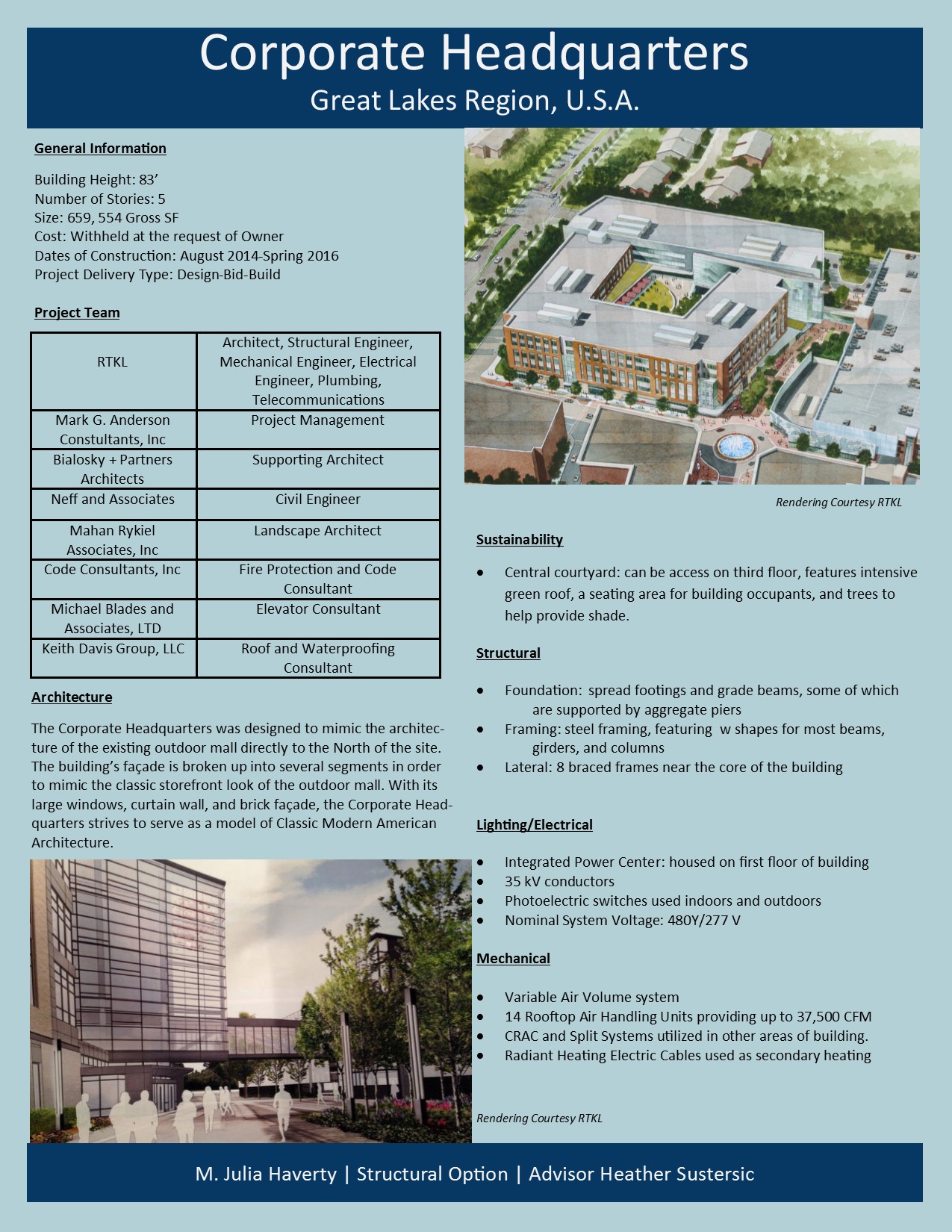Thesis Research |
Building Abstract
Structural Depth
A steel joist system will be used for the gravity system redesign. The design will consist of k-serieis joists for the floor framing and will use w-shaped columns. The steel joists were chosen for their stiffness and lightweight and because of their performance under seismic loading. Using steel joists and limiting their maximum depth to 24" will maintain the building's current floor to floor height. A scenario was proposed in which the building owner required more office space, which lead to the change in the geometry of the interior courtyard. Reshaping the courtyard adds more office space and ultimately lightens the building due to the shrinkage of the heavy intensive greenroof in the courtyard.
The new lateral force resisting system of the Corporate Headquarters is cast-in-place reinforced concrete shear walls. The walls will be in the same locations as the eight braced frames, which are the building's current lateral system.
Breadth 1: Architectrual
An architectural breadth was chosen for this project in order to accomodate the demand for more office space. The geometry of the interior courtyard will change from a trapezoid to a rectangle. By changing the geometry of the space, the planting pattern, shape of the gardens, and location of the walking paths must be reconsidered. The new plants within the gardens will be local to the area, to symbolize the strong partnership between the building owner and the local community. The courtyard redesign aims to evoke a similar feeling to the current design of the courtyard, while maximizing space and maintaining a beautiful working environment.
Breadth 2: Waterproofing
The waterproofing breadth was also chosen for this project due to the change in geometry of the courtyard. The current waterproofing system of the courtyard has planned drains, but changing the geometry could change the drainage path. In order to accomodate the new plants, and the new locations of material upturn and water barriers, a new waterproofing membrane and application style will be chosen. For continuity, the same roofing and application mechanism will be use on the main roof level. In addition to changing the type of membrane and the application process, a study will be conducted for the best way to watertest the membrane. The two primary tests to be considered are flood tests and simple hose tests.
Final Presentation
To view a tentative outline of the final presentation and a sample of the slides, please click the links below.
While great efforts have been taken to provide accurate and complete information on the pages of CPEP, please be aware that the information contained here within is considered a work-in-progress for this thesis project. Modifications and changes related to the original building designs and construction methodologies for this senior thesis project are solely the interpretation of M. Julia Haverty. Changes and discrepancies in no way imply that the original design contained errors or was flawed. Differing assumptions, code references, requirements, and methodologies have been incorporated into this thesis project; therefore, investigation results may vary from the original design.
